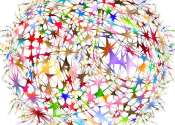Neuroscience is the scientific study of the nervous system. Such studies span the structure, function, evolutionary history, development, genetics, biochemistry, physiology, pharmacology, informatics, computational neuroscience and pathology of the nervous system.
The International Brain Research Organization was founded in 1960, the European Brain and Behaviour Society in 1968, and the Society for Neuroscience in 1969, but the study of the brain dates at least to ancient Egypt. Traditionally, neuroscience has been seen as a branch of the biological sciences. Recently, however, there has been a surge of interest from many allied disciplines, including cognitive and neuro-psychology, computer science, statistics, physics, philosophy, and medicine. The scope of neuroscience has now broadened to include any systematic, scientific, experimental or theoretical investigation of the central and peripheral nervous system of biological organisms. The empirical methodologies employed by neuroscientists have been enormously expanded, from biochemical and genetic analyses of the dynamics of individual nerve cells and their molecular constituents to imaging of perceptual and motor tasks in the brain. Recent theoretical advances in neuroscience have been aided by the use of computational modeling.






